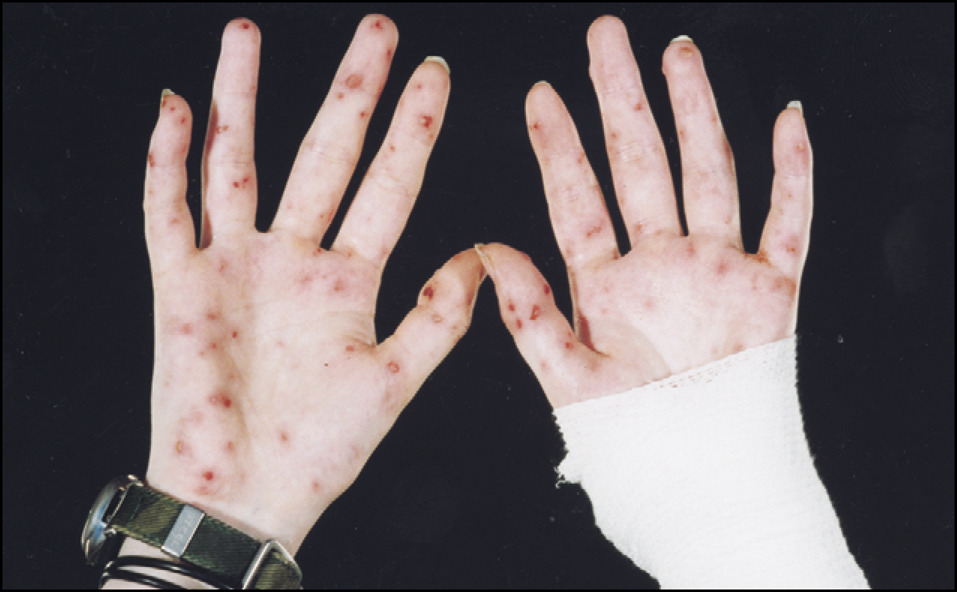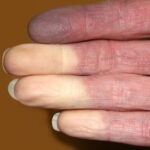Rat-bite fever is a bacterial infection that can result from a bite or scratch from a rat or other rodent. The condition is rare, but it can cause severe health complications if left untreated. Although it is not commonly seen, it remains a significant health concern, particularly in regions with high rodent populations. Understanding rat-bite fever is crucial for timely diagnosis, effective treatment, and prevention.
In this article, we will explore the causes, symptoms, diagnosis, treatment options, and preventive measures associated with rat-bite fever.

What is Rat-Bite Fever?
Rat-bite fever (RBF) is an infectious disease caused by bacteria that are transmitted through bites or scratches from infected rodents. It can also be contracted by handling or ingesting food contaminated with the bacteria from the saliva or feces of rodents. The primary bacteria responsible for rat-bite fever are Streptobacillus moniliformis and Spirillum minus, with the latter being more prevalent in some regions.
Key Features of Rat-Bite Fever:
- Transmission through Rodent Bites or Scratches: Most cases of rat-bite fever occur after an individual is bitten or scratched by a rat or comes into direct contact with rodent secretions.
- Infectious Bacteria: The condition is caused by two main bacteria: Streptobacillus moniliformis and Spirillum minus.
- Global Presence: Rat-bite fever is found worldwide but is more common in areas with dense rodent populations.
Causes and Risk Factors of Rat-Bite Fever
1. Bacterial Agents
The two main bacterial pathogens associated with rat-bite fever are:
- Streptobacillus moniliformis: This bacteria is the most common cause of rat-bite fever in North America and Europe. It can be present in the saliva of infected rats and is typically transmitted through bites or scratches.
- Spirillum minus: Common in Asia, Spirillum minus is another bacterium that can cause rat-bite fever. It may be transmitted by direct contact with infected rats or their urine, feces, or saliva.
2. Rodent Contact
Rodents, particularly rats, are the primary vector for this disease. The bacteria can be found in the saliva, urine, and feces of infected rats. People who work in environments with high rodent populations, such as warehouses, farms, and construction sites, are at greater risk of exposure.
3. Other Risk Factors
- Poor Hygiene and Sanitation: In areas with poor sanitation or rodent infestations, individuals are more likely to come into contact with contaminated surfaces or food.
- Weakened Immune System: People with weakened immune systems, such as those with HIV/AIDS or undergoing chemotherapy, may be more susceptible to contracting rat-bite fever.
Symptoms of Rat-Bite Fever
The symptoms of rat-bite fever can vary depending on the type of bacterial infection. Typically, symptoms appear within 3-10 days after exposure, but in some cases, they may develop several weeks later.
1. Initial Symptoms
The onset of rat-bite fever is often sudden and may include:
- Fever: A high fever is a common symptom, usually accompanied by chills.
- Headache and Body Aches: Individuals may experience significant headaches and muscle aches.
- Swelling at the Site of the Bite or Scratch: Redness and swelling may appear around the area of infection.
- Joint Pain: In some cases, pain or inflammation in the joints may occur, which can be mistaken for other forms of arthritis.
2. More Severe Symptoms
If the infection progresses without treatment, more severe symptoms may develop, including:
- Rash: A rash may appear, often characterized by small, red spots on the skin.
- Septicemia (Blood Infection): In severe cases, the infection can spread to the bloodstream, leading to septicemia, which can be life-threatening if not promptly treated.
- Endocarditis: In rare cases, the infection can affect the heart valves, leading to endocarditis, a serious condition requiring urgent medical care.
- Abscess Formation: Abscesses or swollen lumps may form at the site of the bite or scratch.
Diagnosing Rat-Bite Fever
Diagnosing rat-bite fever requires a combination of clinical evaluation and laboratory testing. The symptoms of rat-bite fever can resemble other infectious diseases, so it is essential to consider the patient’s medical history and recent exposure to rodents.
1. Medical History and Physical Examination
A healthcare provider will begin by reviewing the patient’s symptoms and recent exposure to rats or rodents. A physical examination will be conducted to identify signs of infection, such as redness, swelling, and tenderness around the bite or scratch site.
2. Laboratory Tests
- Blood Cultures: Blood tests may be performed to detect the presence of Streptobacillus moniliformis or Spirillum minus bacteria.
- PCR Testing: Polymerase chain reaction (PCR) testing can help identify bacterial DNA from the infected site or blood.
- Wound Cultures: A culture of the wound may also be performed if there is an open lesion or abscess.
Treatment of Rat-Bite Fever
The treatment of rat-bite fever typically involves the use of antibiotics to eliminate the bacterial infection. Early treatment is essential to prevent complications.
1. Antibiotics
- Penicillin or Ampicillin: These antibiotics are effective against Streptobacillus moniliformis and are often the first line of treatment.
- Doxycycline or Tetracycline: These antibiotics may be used to treat infections caused by Spirillum minus.
- Alternative Antibiotics: In cases where the patient is allergic to penicillin or if the infection is resistant to other antibiotics, alternative treatments such as ciprofloxacin may be considered.
2. Supportive Care
In addition to antibiotics, supportive care may be necessary to manage symptoms such as fever, pain, and swelling. This may include:
- Pain Relievers: Over-the-counter medications like ibuprofen can help relieve pain and reduce inflammation.
- Hydration: Ensuring adequate fluid intake to prevent dehydration, particularly if the patient has a high fever.
3. Hospitalization
In severe cases, hospitalization may be required, especially if the infection has spread to the bloodstream (septicemia) or other organs. Intravenous (IV) antibiotics may be administered in the hospital to ensure effective treatment.
Prevention of Rat-Bite Fever
Preventing rat-bite fever involves minimizing the risk of exposure to rodents and taking precautions when handling animals or working in environments where rodents are common.
1. Avoiding Rodent Contact
- Rodent Control: Implement rodent control measures in and around your home or workplace, including traps, rodenticides, and sealing entry points.
- Wear Protective Gear: If working in areas with rodents, wear protective gloves and clothing to minimize the risk of bites or scratches.
- Safe Handling of Animals: When handling pet rodents or other animals, wash your hands thoroughly and avoid close contact with the animal’s saliva or feces.
2. Maintaining Good Hygiene
- Sanitation: Keep living and working areas clean and free of rodent droppings and food waste.
- Proper Food Storage: Store food in sealed containers and avoid leaving food out in areas where rodents may have access.
3. Post-Exposure Prophylaxis
If bitten or scratched by a rodent, it is essential to clean the wound thoroughly with soap and water. Seek medical attention immediately, especially if symptoms of infection appear. In some cases, a healthcare provider may prescribe antibiotics as a preventive measure following a rodent bite.
Rat-bite fever is a potentially serious condition that can be prevented through proper hygiene and rodent control. Early detection and antibiotic treatment are critical to preventing severe complications. By understanding the symptoms, risk factors, and preventive measures, individuals can protect themselves from the risks associated with rat-bite fever. If bitten or scratched by a rodent, seeking prompt medical care is essential for effective treatment and to avoid the potential spread of infection.

